Hot zones are spreading around the world. It’s only a matter of time before our oceans are too dangerous
Global warming is an unprecedented phenomenon that is slowly bringing the world to it’s knees. Chris Mooney looks into the fisheries who are constantly under threat from the Earth’s changing temperature
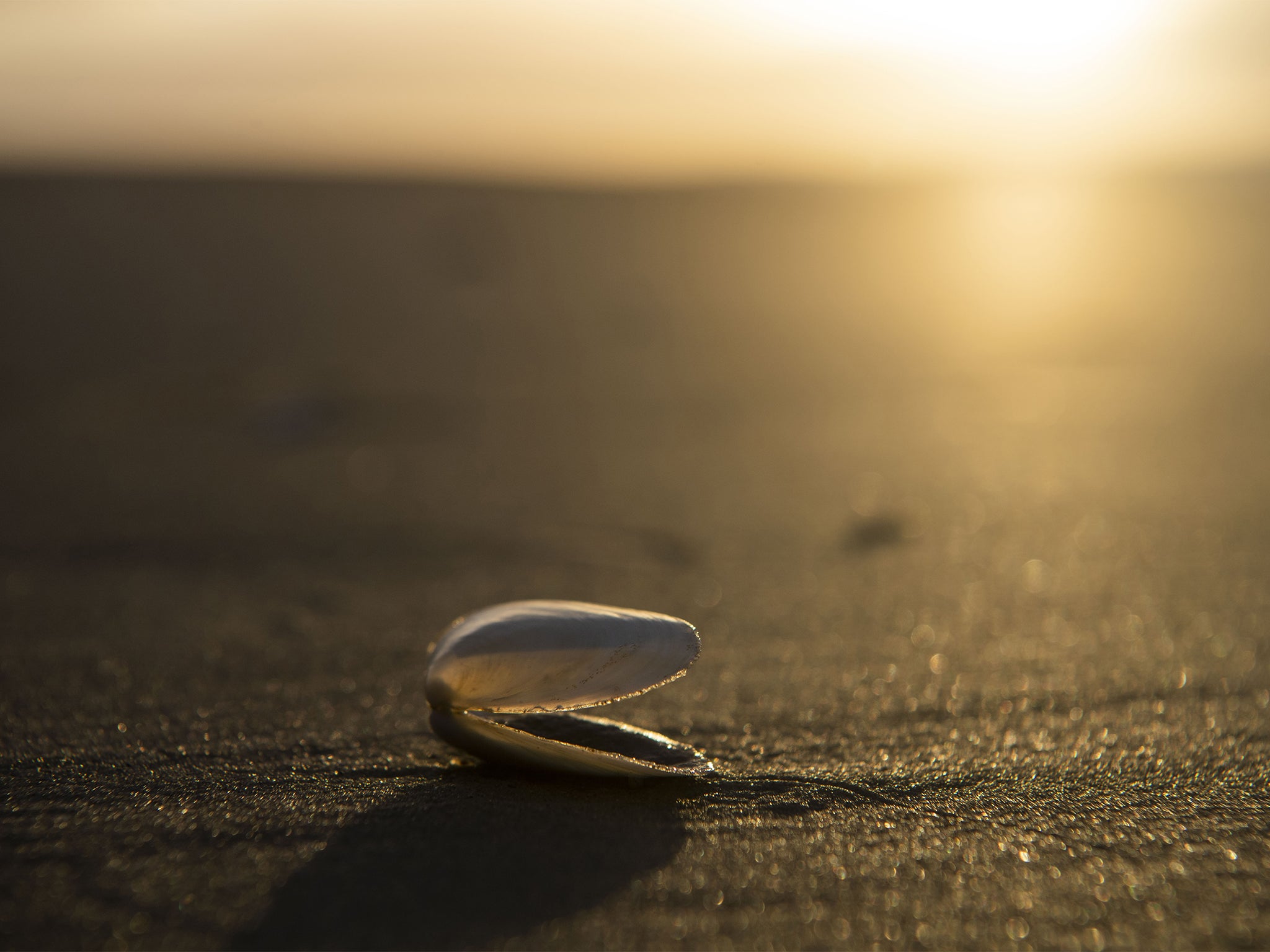
Your support helps us to tell the story
From reproductive rights to climate change to Big Tech, The Independent is on the ground when the story is developing. Whether it's investigating the financials of Elon Musk's pro-Trump PAC or producing our latest documentary, 'The A Word', which shines a light on the American women fighting for reproductive rights, we know how important it is to parse out the facts from the messaging.
At such a critical moment in US history, we need reporters on the ground. Your donation allows us to keep sending journalists to speak to both sides of the story.
The Independent is trusted by Americans across the entire political spectrum. And unlike many other quality news outlets, we choose not to lock Americans out of our reporting and analysis with paywalls. We believe quality journalism should be available to everyone, paid for by those who can afford it.
Your support makes all the difference.The day the yellow clams turned black is seared in Ramon Aguero's memory. It was the summer of 1994. A few days earlier, he had collected a generous haul, 20 buckets of the thin-shelled, cold-water clams, which burrow a foot deep into the sand along a 13-mile stretch of beach near Barra del Chuy, just south of the Brazilian border. Agüero had been digging up these clams since childhood, a livelihood passed on for generations along these shores.
But on this day, Aguero, 70, returned to find a disastrous sight: the beach covered in dead clams. “Mile after mile, as far as our eyes could see. All of them dead, rotten, opened up,” he said. “They were all black, and had a fetid odour.”
He wept at the sight. The clam die-off was an alarming marker of a new climate era, an early sign of this coastline's transformation. Scientists now suspect the event was linked to a gigantic blob of warm water extending from the Uruguayan coast far into the South Atlantic, a blob that has only become warmer in the years since.
The mysterious blob covers 130,000 square miles of ocean, an area nearly twice as big as this small country. And it has been heating up extremely rapidly, more than 2C, over the past century, double the global average. At its centre, it's grown even hotter, warming by as much as 3C, according to one analysis.
The entire ocean is warming, but some parts are changing much faster than others, and the hot spot off Uruguay is one of the fastest. It was first identified by scientists in 2012, but it is still poorly understood and has received virtually no public attention. What researchers do know is that the hot zone here has driven mass die-offs of clams, dangerous ocean heat waves and algal blooms, and wide-ranging shifts in Uruguay's fish catch.
The South Atlantic blob is part of a global trend: around the planet, enormous ocean currents are travelling to new locations. As these currents relocate, waters are growing warmer. Scientists have found similar hot spots along the western stretches of four other oceans: the North Atlantic, the North Pacific, the South Pacific, and the Indian.
Analysis of multiple temperature data sets found numerous locations around the globe that have warmed by at least 2C over the past century. That's a number that scientists and policymakers have identified as a red line if the planet is to avoid catastrophic and irreversible consequences. But in regions large and small, that point has already been reached.
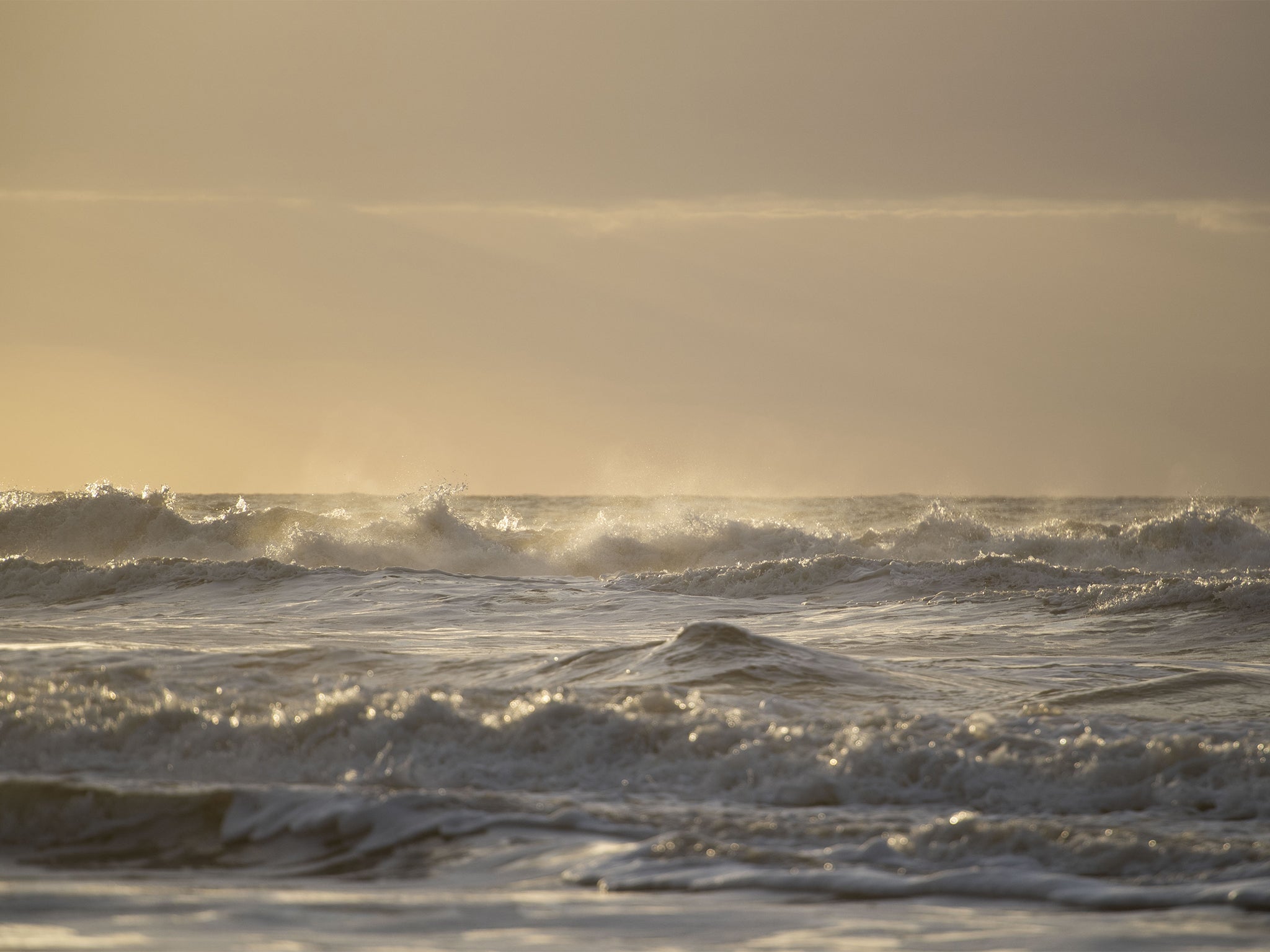
A study of data from Berkeley Earth shows how the temperature average of the last five years compares with 1880-1899: the analysis found that one-tenth of the globe has already warmed by more than 2C, when the last five years are compared with the mid- to late 1800s. That's more than five times the size of the United States. About 20 per cent of the planet has warmed by 1.5C, a point at which scientists say the impacts of climate change grow significantly more intense. The fastest-warming zones include the Arctic, much of the Middle East, Europe and northern Asia, and key expanses of ocean. A large part of Canada is at 2C or higher. Some entire countries, including Switzerland and Kazakhstan, have warmed by 2C. Austria has said the same about its famed Alps.
The percentage of the globe that has exceeded 2C varies depending on the time periods considered. Over the past five years, 8 to 11 percent of the globe crossed the threshold, while over the past 10 years, the figures drop slightly to between 5 and 9 percent. Considering just the past five years increases the area by roughly 40 per cent.
These hot spots are the scenes of a critical acceleration, places where geophysical processes are amplifying the general warming trend. They unveil which parts of the earth will suffer the largest changes. Extreme warming is helping to fuel wildfires in Alaska, shrink glaciers in the Alps and melt permafrost across Canada's Northwest Territories. It is altering marine ecosystems and upending the lives of fishermen who depend on them, from Africa to South America to Asia.
It is making already hot places in the Middle East unbearable for outdoor workers and altering forests, lakes and rivers in the United States. It has thawed the winters of New England and transformed the summers of Siberia.
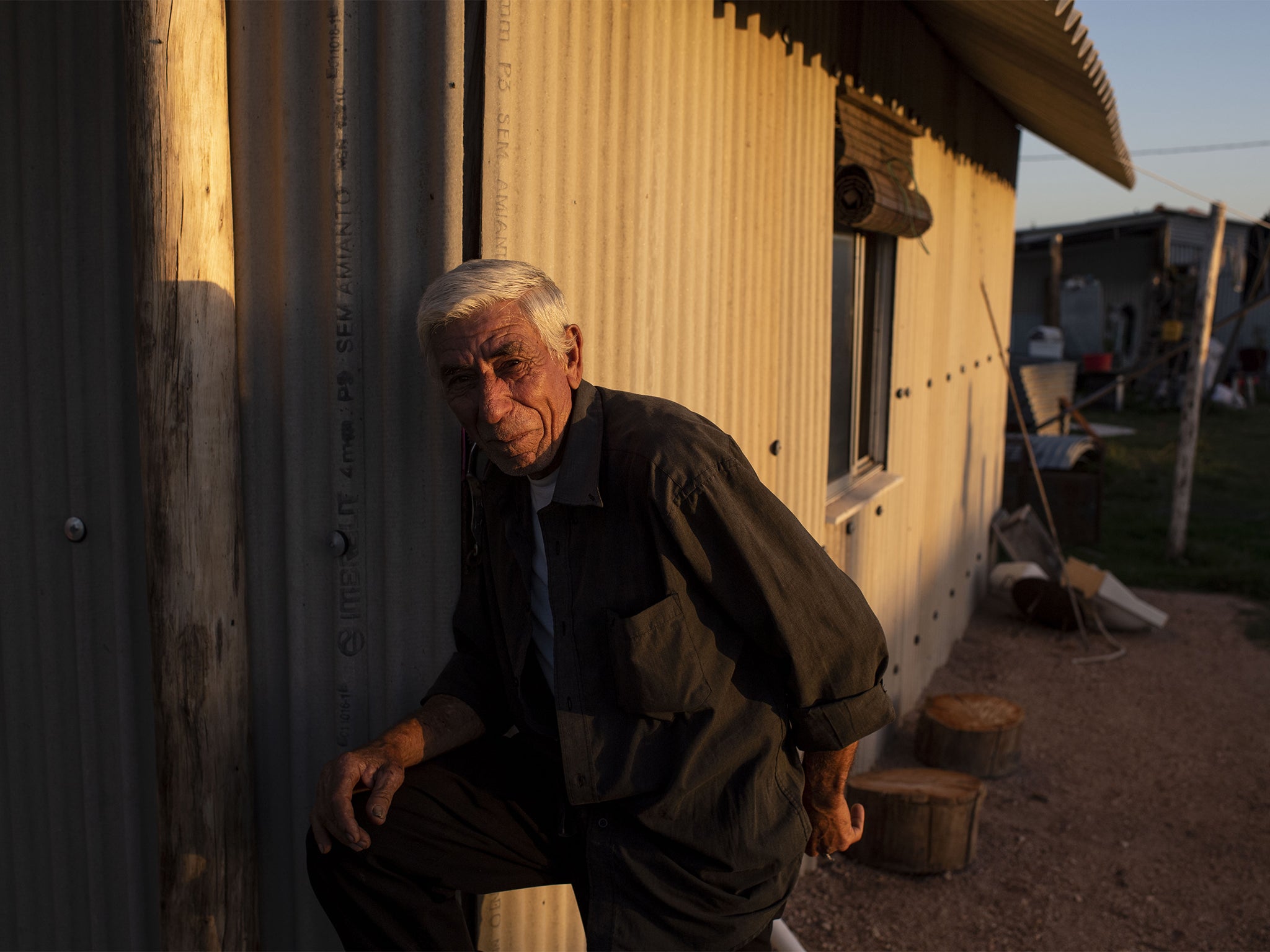
For Uruguay, a small and politically liberal country of fewer than 4 million, the key vulnerability is in the oceans. Uruguay is famous for its laid-back former president, who lived on a humble flower farm rather than at the mansion occupied by his predecessors, as well as its cattle and sheep, which outnumber Uruguayans by a factor of six. But it's also known for its tourism and beaches. Nearly half of Uruguayans live in the coastal megacity of Montevideo. Meanwhile, international tourists flock to the beaches of Punta del Este, a stylish resort where the Trump Tower Punta del Este is under construction.
But waters have warmed by 1C in just 20 years in the estuary of the Rio de la Plata, where the vast river spills into the ocean, and in the common offshore fishing area shared by Uruguay and Argentina. That is a very fast change in a very short time. In 2017, a record-setting ocean heat wave caused mass fish die-offs and a dangerous algal bloom, forcing beach closures in Montevideo. Such events are becoming more common and more severe. What the clammers along the coast near Brazil experienced decades ago is spreading and becoming harder to ignore.
Uruguay is trying to help them, but that effort underscores the possibilities, and the limits, of adapting to extreme climate change. Over the past five years, earth has passed a significant threshold. The planet is now more than 1C warmer than it was in the mid- to late 1800s, before industrialisation spread across the world. The past five years are by far the hottest, and display the most numerous and expansive 2C hot spots. And while five years may be a brief period in climatic terms, 2019 is already following the same ultrawarm pathway.
Barring some dramatic event like a major volcanic eruption, which can cause temporary global cooling by spewing ash that blocks the sun, scientists expect this to continue and steadily worsen. “We're not going to really cool down much in the future, so the last five years are indicative of the new normal,” said Zeke Hausfather, a researcher with Berkeley Earth.
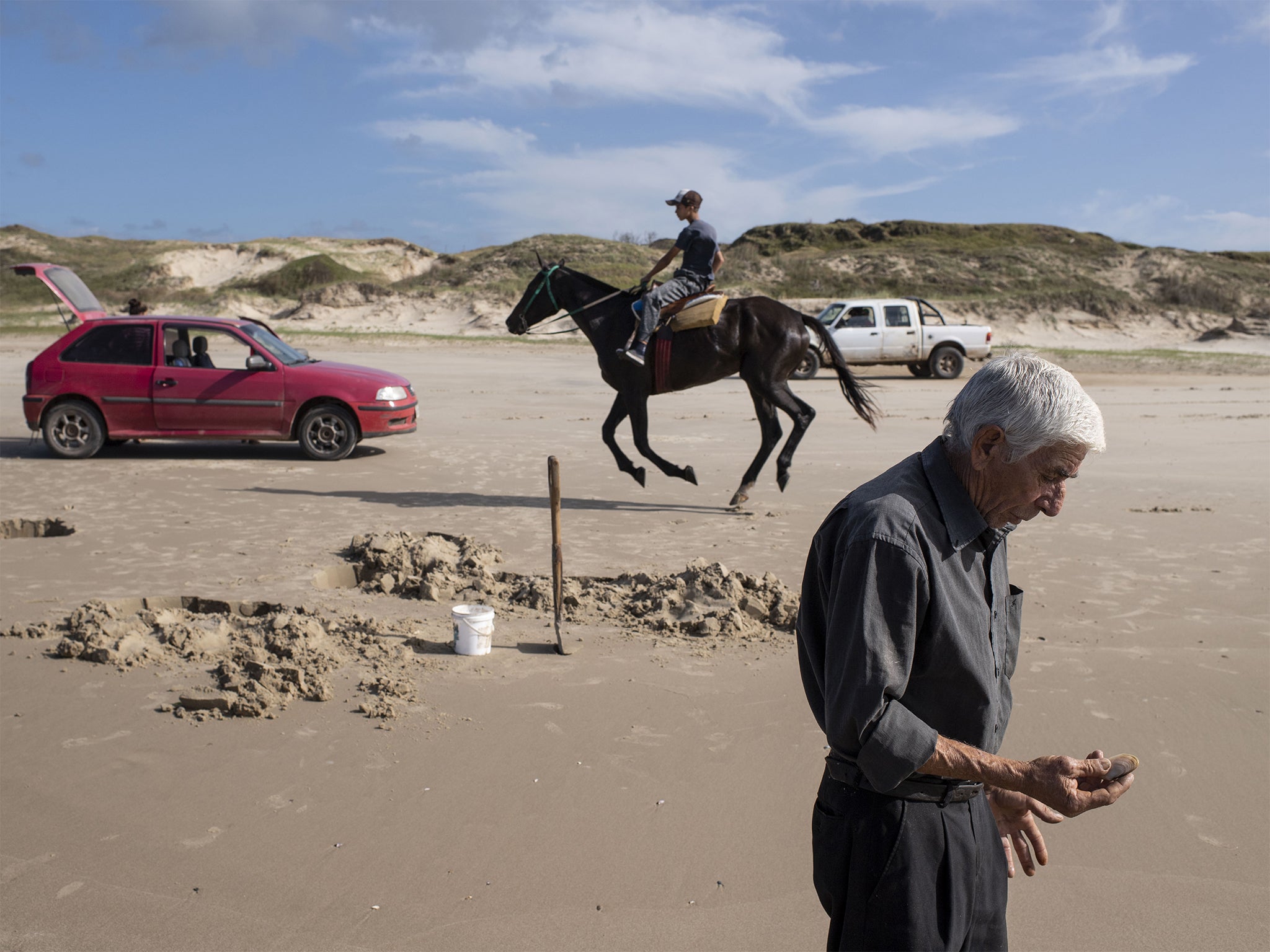
While the global data sets do not agree about what is happening to every stretch of the earth, they show unmistakable patterns. For instance, an intriguing group of ocean hot spots appears again and again. One cause? The tropics are expanding. Straddling the equator, the tropics are already hot because they receive the most sunlight. As the sun hits the tropics, enormous columns of air rise skyward and then outward. But as greenhouse gases trap more heat, those columns of air are pushed farther toward the north and south poles.
Air that rises in the tropics falls back down over the middle latitudes. With a warming planet, though, the air is falling in different places. One region where that air sinks is the South Atlantic Ocean, where the tropical expansion has led to a southward shift in the location of a gigantic counterclockwise circulation of winds. These winds, in turn, drive key ocean currents, including a warm, salty, 60-mile-wide stream called the Brazil Current, which is being pushed even farther south.
Near Uruguay, the Brazil Current collides with the cold and nutrient-rich Malvinas Current that flows north from waters off Argentina. Where the two currents meet, known as the “confluence”, features sudden temperature contrasts and fosters rich fisheries. But that zone, too, is on the move. Research suggests it is shifting southward at a rate of more than 40 miles per decade.
The result has been a stunning temperature change off the Uruguayan coast. “The southward displacement of warm waters creates a very strong signal,” explains oceanographer Alberto Piola, a professor at the University of Buenos Aires.
In 2012, scientists first flagged it as one of the ocean's fastest-warming stretches. And they've attributed the changes to a broad global pattern that can't be explained just by natural climate variability.
Some other analyses suggest that a tremendous amount of change has occurred here since the late 19th or early 20th century. Gerrit Lohmann and Hu Yang, climate scientists with the Alfred Wegener Institute in Germany, examined the Brazil Current region. They found a warming of between 2C and 3C between 1900 and 2018, with the warmest regions located farther offshore, according to a high-resolution data set of sea surface temperatures from the Hadley Centre in Britain.
Ramon Aguero was about six years old when his parents taught him and his younger brother Arturo how to dig for clams. The brothers learnt to read the weather and the tides to find the richest lodes, which they collected with shovels and buckets.
Later, as the brothers grew up, it became their work as well – work that disappeared when the government banned clamming after the 1994 die-off. Arturo Agüero had five children to feed, and had to move to Montevideo to find work.
“When they shut down the clams, I wanted to die,” he said. “Because that is what I knew how to do. I knew how to work the clams. I knew it all.”
Similar upheaval struck 100 other clammers, many of whose families had worked these beaches for generations. Forty years ago, marine biologist Omar Defeo, a professor at the University of the Republic in Uruguay, began studying this fishery. He thought it was a good dissertation topic, so he began making the 200-mile trip from Montevideo out to a region called the Rocha department.
It's a place of endless cattle fields, horseback riders along the highways, and beaches that, unlike in the tourist havens far to the south, are quiet and almost empty. But then came the huge die-offs, first along the coast of Brazil, then Uruguay and finally Argentina, wiping out clams along each coastline. Defeo's research became much more urgent.
“In a process of more or less 10 years, the mass mortalities destroyed the populations of yellow clam,” said Defeo, who has made about 200 trips to the beaches at Barra del Chuy.
In 2008, the fishery finally reopened after a 14-year hiatus, but for an extremely small catch - just three tons. The most recent year's allowed catch was only 10 tons - a decline of 95 percent from the peak of 220 tons in 1985. Over decades of research, Defeo and his colleagues have chronicled the species' downfall amid warming waters: The clams are now much smaller, rarer and increasingly contaminated by toxic red tides - making them unsafe to eat for weeks at a time. The red tides, in turn, are worsened by climate change, scientists say.
What's more, the Rocha beaches are crawling with more tropical species, including crabs and smaller kinds of clams attracted to the warmer waters. The upheaval matches a key prediction of climate science.
That's the sort of biological wreckage that has shown up along the beaches at Barra del Chuy. For the fishers who remain, even gathering the small numbers of clams that they're allowed to take has gotten tougher.
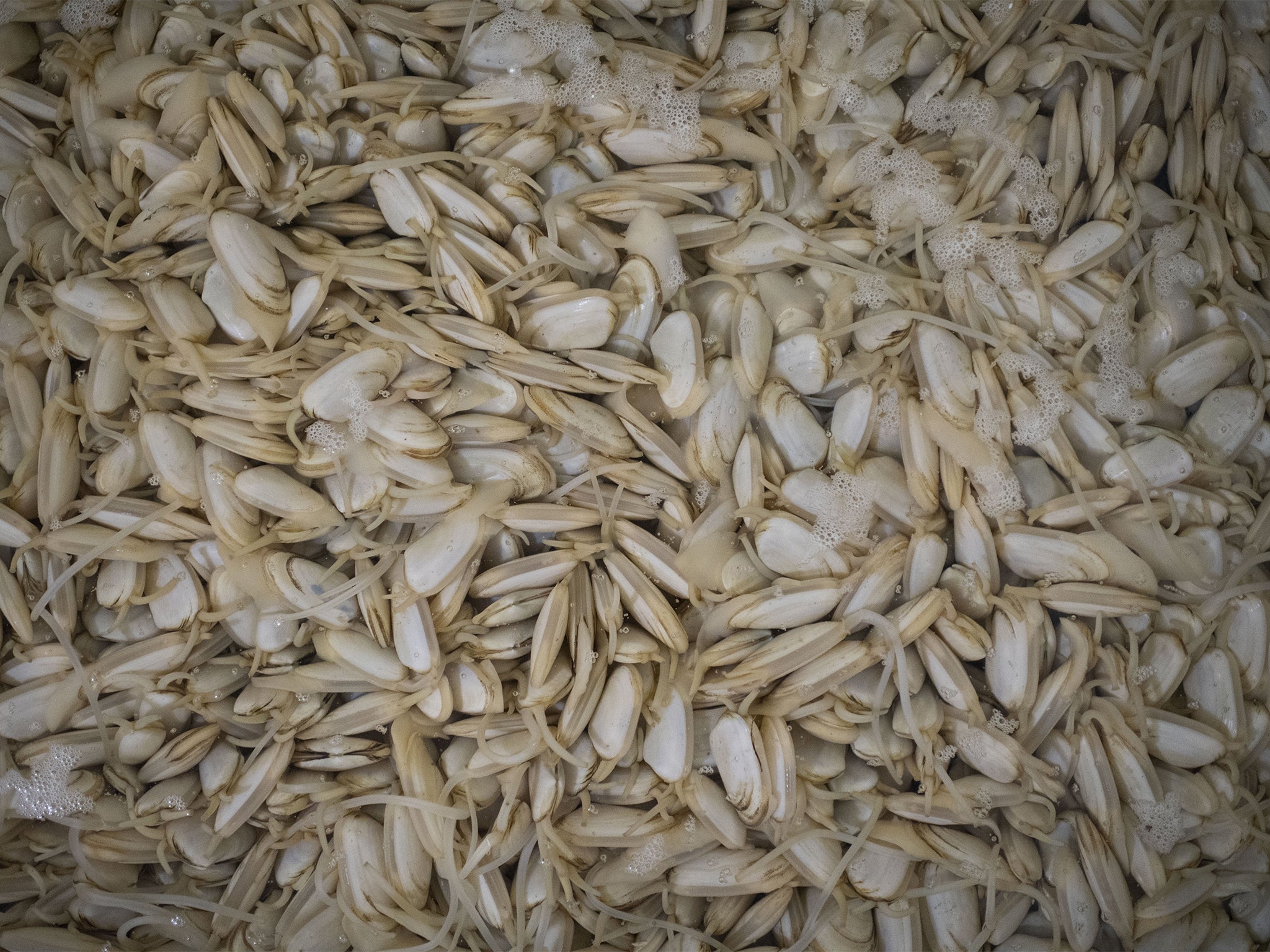
On an early April day, fall in the Southern Hemisphere, driving winds from the south pushed the waves more than a football field's length inland over the gently sloping beach. For Maria Celia Pereyra Ambrossi, there was no way to pursue her catch. The clams, which are hard to find even on a good day, were all underwater.
“The wind in this area of the beach is always strong, and each passing year, it is stronger,” said Pereyra Ambrossi, her silver hair whipped in all directions. “It wasn't that way before.”
Two days later, the weather had finally calmed, and the ocean had given back much of the beach. Jose Rocha, 68, and four other family members packed into an old red Volkswagen Golf and drove straight out onto the sand. Barefoot, Rocha walked along the shoreline, dragging his rusty shovel behind him until he found a promising spot to dig.
But the clams were sparse, and only about four pounds were gathered. After about an hour, Rocha stopped and rolled a cigarette as he leaned against the hood of his car. “We are in a time. I do not know what's happening, where the climate is not the same,” Rocha said. “The climate is not the same anymore.”
Government regulators, academics like Defeo and the fishers themselves have hatched a plan to leverage the shrinking supply of the yellow clam. “The strategy is to catch low numbers of clams, because the stock is very reduced, to sell with a good price to restaurants and just to have this low number of fishers,” Defeo said.
The clams are commanding prices nearly double what they were just six years ago, thanks to increasing restaurant demand.
In recent years, the clam has been marketed at high-end restaurants in the tourist meccas of Punta del Este and José Ignacio, about 100 miles down the coast from Barra del Chuy. It's become part of a trend to alter the Uruguayan diet, heavy on beef, toward healthier and locally gathered food.
The first to serve the yellow clam was Lo de Tere in Punta del Este, one of Uruguay's most popular tourist spots. Just steps from the harbour, it serves only Uruguayan food gathered within about 100 kilometers.

On a recent visit, chef Nicolas Larrosa pulled several live clams out of a tub of seawater to display them before cooking. As he lifted one up, it sprayed water on the kitchen floor from both of its siphons, the tubelike structures used to filter seawater and gather nutrients.
Larrosa filled a frying pan with oil and garlic before adding the clams, still in their shells. After the frying, he sprinkled a bit of parsley. It's simple - and that's the point.
“People have discovered this. And they are addicted,” said Eduardo Marfetan, who owns the restaurant with his wife and daughter. “I have one client, from Buenos Aires, he calls me, before he comes to Punta Del Este, he says, 'You have clams?' ”
Most of the time, the answer is no. The clams are never on the menu, Marfetan said. They are a special sold only when the restaurant has them in stock. The deliveries arrive from Nancy Schuch and her husband, Gabriel Rocha, who buy them from the clammers off the beach. She moves the clams through a small beachside processing plant - the first of its kind in this industry. It is this innovation, paired with a marketing campaign aimed at restaurants, that has led to a new commercial life for the clam.
When it comes to the effects of climate change in the South Atlantic, the clams are only the beginning
Plans are afoot for an even larger plant. Schuch and Javier Vitancourt, the plant's veterinary technician, hope to create a more state-of-the-art facility that will also be open to the public, who would be able to try the clams at any time.
That is, if the climate allows it. Schuch said the clams - and the business - will be OK in the long term. “I'm positive,” she said.
Defeo, though, takes a cautious tone about the future. “The resource is in a delicate situation,” he said. “The stock has not been recovered, and we need to monitor the fishery constantly just to provide early warnings.”
When it comes to the effects of climate change in the South Atlantic, the clams are only the beginning. Ocean life is exquisitely sensitive to temperature. In July, Defeo and his student Ignacio Gianelli published a study demonstrating for the first time that the entire Uruguayan fish catch is shifting toward more tropical, warm-water species.
Andres Domingo, the director of Uruguay's national oceans and fisheries agency, is worried about the changing currents. “These conditions probably have a lot of impact on ecosystem ecology,” he said.
Harvests of the Argentine hake, traditionally the largest fish catch in Uruguay, have plummeted. The hake is a cold-water species, so it may be fleeing the warming waters. Yet given that the species has also been overfished, it's hard for scientists to attribute the changes exclusively to warming.
Patagonia has experienced an utterly opposite trend - a dramatic explosion in the catch of Argentine red shrimp. The catch has grown from a little over 40,000 tons in 2006 to a record of 230,000 tons in 2017. Barbara Franco, who studies fisheries and climate change at the University of Buenos Aires, said the temperature measurements in the deeper ocean waters along Patagonia are too spotty to attribute the shrimp boom to climate change.
Climate change can make for winners and losers, especially when it comes to fisheries. Along the US coast, fast-warming waters drove lobsters away from southern New England and into the Gulf of Maine, leading to crashing fisheries in one spot and a boom in another. That could be happening here, too.
Still, the overall consequences of these oceanic changes are likely to be negative, Franco said. Fisheries in Uruguay and Brazil are projected to decline by more than a quarter by the end of the century.
That could mean major harm to any number of small-scale fisheries, far beyond the community that gathers the yellow clam. According to the United Nations' Food and Agriculture Organisation, workers in these smaller, often local and subsistence-driven fisheries account for 90 percent of all fishery workers around the globe, largely in developing countries. In many cases, they are earning the equivalent of less than $1 per day.
Scientists say they are struggling to keep up with the impacts of a warming world, whether measuring changes in the Arctic or disappearing kelp forests in the southern Pacific.
“We're really playing catch-up,” said marine scientist Boris Worm of Dalhousie University in Canada. “Everything we base our civilization on is based on the accumulated experience from the last 7,000 years, about how the world works, and how we can survive in this world that had an exceptionally stable climate.
“And we're shifting away from that equilibrium at breakneck speed now. We're living in a no-analog world that none of us has any experience with.”
© Washington Post
Join our commenting forum
Join thought-provoking conversations, follow other Independent readers and see their replies
Comments